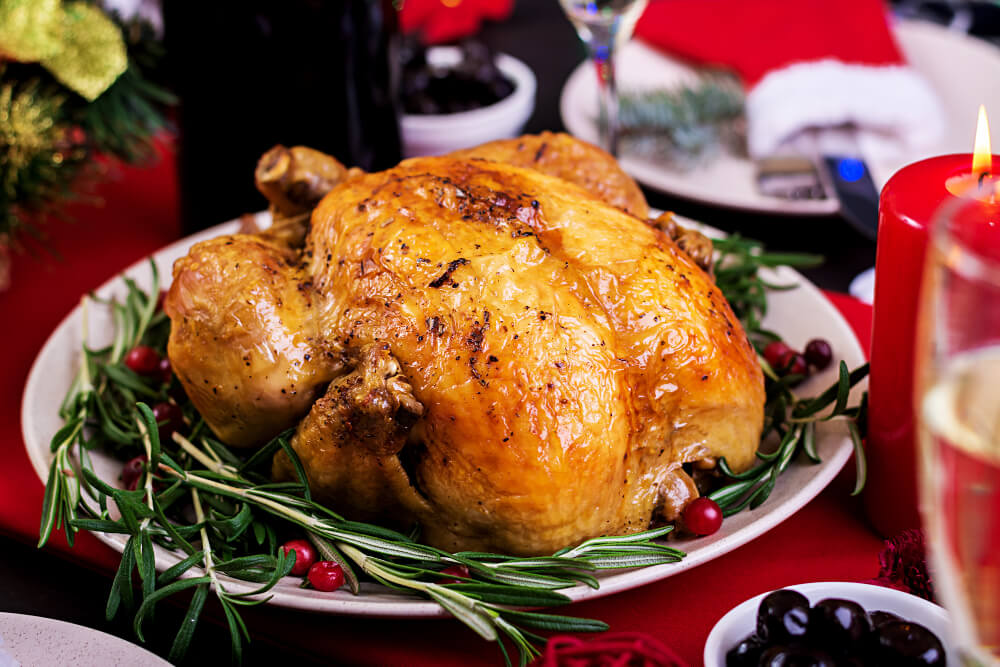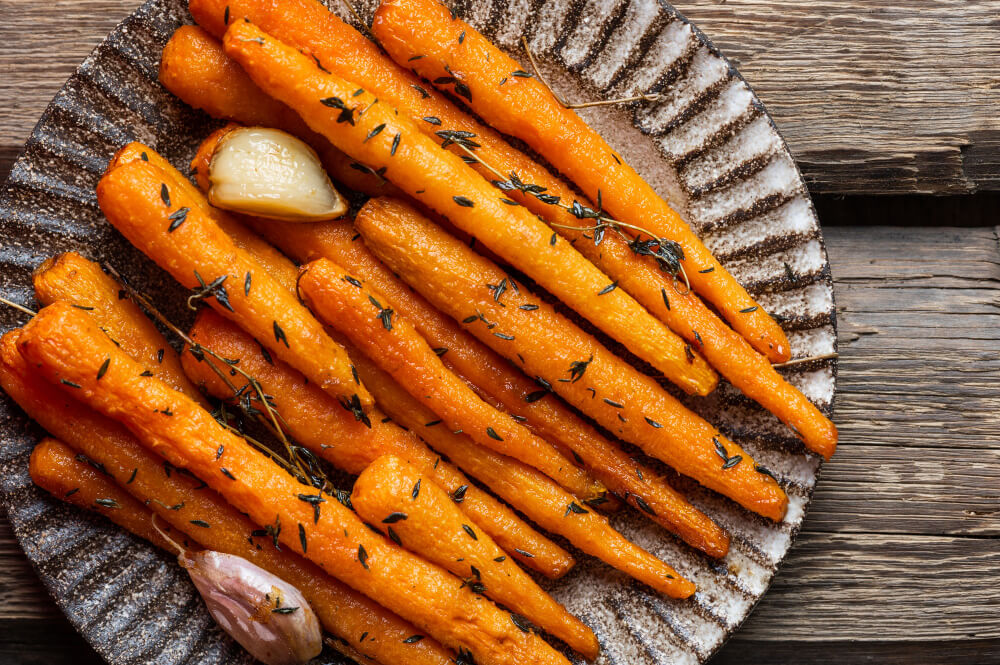
Are you tired of your dull and worn-out cutting board? It's time to upgrade your culinary experience by choosing the perfect wood cutting board for your kitchen. In this blog post, we'll dive deep into the world of hickory wood cutting boards to help you determine if it's the right choice for you. With its open grain structure and compatibility with woodworking tools, hickory has gained popularity as a suitable material for cutting boards.
We'll explore the various characteristics of hickory wood, including its advantages and disadvantages as a cutting board material, as well as other wood options you should know. Finally, we'll share some essential tips on how to take care of your hickory cutting board to ensure its longevity.
So, let's take a closer look at the world of hickory wood cutting boards and find out if they're the ultimate choice for your kitchen! Keep reading to unveil the final verdict.
What is Hickory?
Before anything else, let's get acquainted with hickory and understand what makes it a type of wood that is increasingly popular for crafting cutting boards. Hickory is an open-grained wood, known for its exceptional hardness and durability. Originating from the hickory tree, this wood has a distinctive appearance that adds a touch of elegance to any kitchen.
A hickory butcher block is an excellent example of how this hard wood can be transformed into a practical and stylish kitchen accessory. Its toughness makes it a popular choice for cutting boards, as it can withstand the wear and tear of everyday use. A cutting board made from hickory is not only visually appealing but also highly functional, providing a reliable surface for all your chopping needs.
Incorporating a wooden cutting board made of hickory into your kitchen setup can be a game-changer. The unique properties of hickory wood, such as its hardness and open-grain structure, make hickory for cutting boards a sought-after option. Read on to discover more about this versatile wood and why it might just be the perfect addition to your kitchen arsenal.
Characteristics of Hickory Wood

Now that we know the origins of hickory, let's delve into the characteristics that make it stand out among other types of wood. Although all butcher block cutting boards share some common traits, hickory boasts unique features that set it apart and make it an appealing choice for wooden boards. Here's a list of some of the most notable characteristics of hickory wood:
-
Hardness: Hickory is one of the hardest domestic woods available, making it an ideal choice for cutting boards. This durable wood can withstand constant chopping, slicing, and dicing without showing significant signs of wear.
-
Shock resistance: Hickory is also known for its impressive shock resistance. This quality helps it endure the impact of knives and other kitchen tools without cracking or breaking.
-
Open grain: The open-grained nature of hickory allows for better absorption of oils and finishes, providing a more resilient surface for cutting boards.
-
Density: Hickory's dense wood structure offers excellent resistance to warping and bowing, ensuring that your cutting board remains flat and stable over time.
-
Workability: Working with hickory can be challenging due to its hardness, but using the right woodworking tools and techniques can result in a beautifully crafted cutting board.
-
Appearance: Hickory wood displays a striking contrast between its pale sapwood and darker heartwood, creating a visually appealing pattern that adds a touch of sophistication to any kitchen.
-
Natural resistance: Hickory is naturally resistant to decay and insects, making it an ideal choice for cutting boards that will last for years to come.
These characteristics contribute to the growing popularity of hickory cutting boards, as they offer a perfect blend of functionality, durability, and aesthetics.
Let's Take a Closer Look
To make an informed decision about whether hickory is the right choice for your cutting board, it's essential to consider both the advantages and disadvantages of this wood. We'll examine the pros and cons of using hickory for a cutting board, highlighting why it's a popular choice and some potential drawbacks you should be aware of.
The Advantages of Hickory as a Cutting Board Material
-
Durability: Hickory is a strong, hard, and dense wood, making it highly suitable for cutting boards due to its ability to withstand daily use. This durability means that a hickory cutting board will last for years, even with regular use.
-
Shock resistance: When used as a cutting board, hickory's natural shock resistance helps it endure the impact of knives and other kitchen tools without cracking or splintering.
-
Aesthetics: The contrasting shades of hickory's sapwood and heartwood create a visually appealing pattern that enhances the overall appearance of your kitchen.
-
Hygiene: Hickory's open grain structure allows it to absorb oils and finishes effectively, which helps create a more sanitary cutting surface compared to some other types of wood.
-
Versatility: Whether you opt for an end grain cutting board or an edge grain butcher block cutting board, hickory is an excellent choice. Its properties make it ideal for cutting boards of various styles and sizes.
The Disadvantages of Hickory as a Cutting Board Material
-
Workability: Hickory's hardness can make it challenging to work with, requiring specialized woodworking tools and techniques. This may result in a higher cost for a custom-made hickory cutting board.
-
Weight: Hickory is a heavy wood, which can make larger cutting boards difficult to move around the kitchen.
-
Maintenance: Due to its open grain structure, hickory cutting boards may require more regular maintenance compared to closed-grain wood options. This includes oiling and cleaning the board to prevent it from drying out and cracking.
-
Cost: The cons of hickory wood also include a potentially higher price compared to other wood options, mainly due to the cost of the material itself and the specialized labor involved in working with hickory.
Final Verdict
In the Final Verdict, hickory stands out as a strong contender when it comes to choosing the ideal wood for a cutting board. With its durability, shock resistance, and aesthetic appeal, there's no doubt that hickory is good for crafting high-quality cutting boards.
However, it's essential to consider the potential drawbacks, such as workability, weight, maintenance, and cost, before making a decision. By evaluating these factors alongside the benefits of this cutting board wood, you can determine if hickory is the perfect fit for your kitchen needs, ensuring a lasting and efficient addition to your culinary toolkit.
Other Wood Options You Should Know

While hickory is an excellent choice for cutting boards, it's essential to be aware of other wood options that may be more suitable for your specific needs. Here are a few alternatives to consider when selecting the best wood for your cutting board:
Maple
Maple cutting boards are a popular choice due to their closed-grain structure, which makes them less porous and easier to clean. Maple is also hard enough to withstand the wear and tear of daily use, but slightly softer than hickory, making it less likely to dull your knives.
Cherry
Cherry wood is another excellent option for cutting boards, offering a combination of beauty and durability. It's a medium-density hardwood, providing a stable cutting surface without being excessively hard. Cherry wood's attractive reddish-brown hue adds warmth and elegance to your kitchen.
Walnut
Walnut is a favorite among woodworkers for its rich, dark color and natural beauty. It's a moderately hard wood that provides a durable cutting surface without being overly harsh on knives. A walnut cutting board can be a stunning focal point in any kitchen.
Teak
Teak is a tropical hardwood known for its natural oils, which make it resistant to moisture, warping, and cracking. This makes it an excellent choice for cutting boards, especially if you live in a humid climate or your cutting board frequently needs washing.
How to Take Care of Your Hickory Cutting Board
Once you've chosen a hickory butcher block cutting board, it's crucial to know how to properly maintain it to ensure its longevity and performance. Follow these tips to keep your hickory cutting board in the best possible condition:
-
Cleaning: After each use, wash your hickory cutting board with warm, soapy water, taking care not to submerge it completely. Rinse it thoroughly and dry it immediately with a towel to prevent moisture from damaging the wood.
-
Oiling: Due to its porous wood structure, a hickory cutting board requires regular oiling to maintain its moisture content and prevent cracking. Use a food-grade mineral oil or a specially formulated cutting board oil to coat the surface evenly, allowing the oil to soak in for a few hours before wiping off any excess. Repeat this process every few weeks or when the board appears dry.
-
Grain filler: You may choose to apply a grain filler to your hickory cutting board to reduce its porosity and make it easier to clean. This can also enhance the beauty of the wood and create a smoother cutting surface. Follow the manufacturer's instructions for application and curing times.
-
Disinfecting: To prevent bacterial growth, occasionally disinfect your cutting board by wiping it with a solution of 1 tablespoon of bleach in a gallon of water. Rinse the board thoroughly with clean water and dry it immediately.
-
Avoiding cross-contamination: To prevent cross-contamination, use separate cutting boards for raw meats, poultry, and seafood, and for fruits, vegetables, and other foods. Clean your cutting board thoroughly between uses.
-
Resurfacing: Over time, your hickory cutting board may develop knife marks and scratches. To restore its surface, lightly sand the board with fine-grit sandpaper and reapply oil to seal and protect the wood.
Conclusion
In conclusion, hickory is a hardwood that offers durability, shock resistance, and visual appeal, making it an excellent choice for cutting boards. By considering the advantages and disadvantages of hickory, as well as alternative wood options, you can determine the ideal material for your cutting board needs.
Proper care and maintenance will ensure your hickory cutting board lasts for years, providing a reliable and stylish surface for your culinary adventures.
Related Articles
- Wood vs. Plastic Cutting Boards Which One Is the Best?
- Bamboo vs Wood Cutting Boards: The Pros & Cons You Need To Know
- How To Clean a Wood Cutting Board Like a Pro: Simple and Easy Tips
- Best Wood for Cutting Boards, the Ultimate Guide
- Why Use a Cutting Board Oil Applicator?
- Cutting Board Oil: What Is the Best Oil for Wood Cutting Boards?
- How to Refinish a Wood Cutting Board and Make It Look Like New
- Is Oak Good for Cutting Boards - Best Wood for Cutting Board Guide
- How to Fix a Warped Cutting Board
- How to Season a Wood Cutting Board | Wooden Cutting Board Guide
- Wood Not to Use for Cutting Boards | Cutting Board Guide
Related Products You Might Like
If you're considering other wood cutting boards like hickory, be sure to explore the options offered by Mevell. We provide high-quality walnut and maple cutting boards, both of which are great alternatives to hickory edge grain butcher block.
These woods possess unique characteristics that make them suitable for use as cutting boards, offering a variety of choices for those seeking different wood for butcher blocks or cutting boards than hickory.
Explore our range to find the perfect addition to your kitchen.



